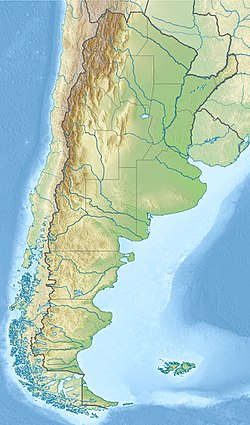Top Qs
Timeline
Chat
Perspective
Lohan Cura Formation
Geologic formation in Argentina From Wikipedia, the free encyclopedia
Remove ads
The Lohan Cura Formation is a geologic formation with outcrops in the Argentine provinces of Río Negro, Neuquén, and Mendoza. It is the second oldest Cretaceous terrestrial formation in the Neuquén Basin.
The Lohan Cura Formation unconformably overlies the terrestrial La Amarga Formation. In some places it also overlies the older marine Agrio and Bajada Colorada Formations of the Mendoza Group through the same Middle Miranican unconformity. It is in turn overlain by the Candeleros Formation of the Neuquén Group, separated by the Main Miranican unconformity. The Lohan Cura correlates with the Rayoso Formation in some areas.[1]
Remove ads
Subdivision
The Lohan Cura Formation contains two members of roughly equal thickness. The lowermost member, Puesto Quiroga Member is approximately 85 metres (279 ft) thick. The lowest sediments in this unit are conglomerates, overlain by sandstones and siltstones. The upper two-thirds of the member consists mainly of shales. The Cullín Grande Member is the upper member within the formation, about 92 metres (302 ft) thick, which contains numerous sandstones displaying evidence of stream channels. Near the top of the sequence, siltstones and claystones become dominant.
Remove ads
Fossil content
Remove ads
See also
References
Further reading
Wikiwand - on
Seamless Wikipedia browsing. On steroids.
Remove ads



